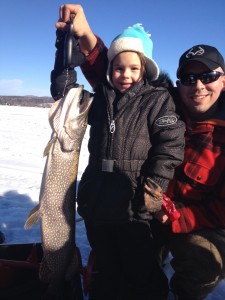So, what’s happening at the Berkshire National Fish Hatchery (BNFH) in Hartsville, Ma these days? Well, for starters, the hatchery is raising a few fingerling brook trout to be released in local waters and for its fishing derbies….. some 50,000 of them!
It recently received 10,000 lake trout eggs of the Lake Champlain strain. They will grow here in the Hatchery for a couple of years and then be transferred to the White River Hatchery in Vermont. The date of transfer depends on when they can re-open that hatchery which, as you may recall, was devastated by Hurricane Irene. There, they will be used as broodstock to produce eggs for all Vermont waters and will be used as a back-up egg source for the Great Lakes.
In 2010, the Genoa National Fish Hatchery in Wisconsin shipped a batch of Klondike strain lake trout. Now, approximately 20 inches in length, they will be kept for here for broodstock. Later this year the BNFH is planning to receive another lot. It is necessary to vary the ages of the lakers in order to have better genetic diversity and healthier fish. They will be maintained here providing eggs for 6 years and then be switched out for newer ones.
Remember those lakers that were grown here and then sent to the Allegheny National Fish Hatchery in PA a couple of years ago? Well, this year that hatchery produced approximately two million eggs from them. Once hatched, the new fish will be kept there for about 1 1/2 years and then will be released into Lake Erie and Lake Ontario to restore populations. The reason they spent a few years here in the BNFH was because lake trout require 6 years to produce eggs and the Allegheny hatchery was closed in 2007 due to disease issues and to do new construction.
So why are all of these lakers brought here in the Berkshires? It’s because of the water. It has been estimated that the hatchery aquifer goes a mile below the earth’s surface and the waters that come out of the ground have an average year round temperature of 46-47 degrees. Brookies and lakers thrive in that cold water.
The USFWS has discontinued raising salmon for the Connecticut River Atlantic Salmon restoration program and consequently the last group of salmon will be stocked from the hatchery this spring (More to come on this subject in a later column). Henry Bouchard, USFWS Project Leader for the BNFH and Manager of the Dwight D. Eisenhower National Fish Hatchery in Chittenden, VT, reported at the last Berkshire Hatchery Foundation meeting that the BNFH has been funded in the same amount as last year. This was possible partly because its excellent water, its involvement in the Great Lakes Initiative and because of the Berkshire Hatchery Foundation, a unique organization entirely supported by volunteers.
The Foundation, made up of volunteers, is also busy these days. Its Board is working on the 2013 trout stocking program which in 2012 provided fish for 25 public fishing events. It is also excited about establishing a scholarship fund for aquaculture and environmental students in the Monument Mountain and/or Mount Everett High Schools. They are planning to present a scholarship to students graduating this June. The size of the scholarship(s) will depend on how much the Foundation is able to raise. Donations to this fund can be sent to the Berkshire Hatchery, P.O. Box 84, Monterey, MA 01240, c/o George Emmons.
So, as you can see, our little hatchery and the Foundation are making a difference, in terms of propagating those lakers, providing trout for our young anglers and supporting students who may one day make a difference in the environmental or aquaculture field. Certainly these are reasons for us to be proud of them. *****

